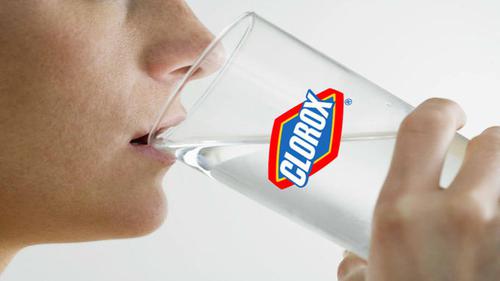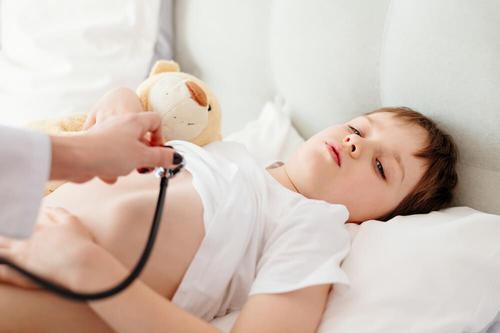What Should You Do if Someone Drinks Bleach?
Bleach is a household name that is known for various uses such as disinfecting surfaces and removing stains. It can also be used to disinfect drinking water if it is used effectively. It is used for stain removal and disinfecting because it contains chemicals such as sodium chloride, sodium carbonate, sodium hypochlorite, sodium polyacrylate and sodium hydroxide which serve as bleaching agents. Other chemicals are added to scented bleach. Household bleach contains 5.25% sodium hypochlorite in water. It is your call to understand what to do in case you are met with a bleach drinking scenario. Below are the details.
What to Do If Someone Drinks Bleach Accidentally
In most cases, people drink bleaches accidentally either because it was stored in an unmarked container or because it looks like water. In that case, you may be wondering what to do if someone drinks bleach? Below are some of the things to do.

1. Call the doctor
First of all, remain calm and call the poison center before administering first aid to make sure the person has not swallowed a dangerous amount. Large amounts of consumed bleach are life-threatening. You should call the emergency service in your area as you wait for further instructions from the medics. You can also take the victim to the nearest emergency center immediately and carry along the induced bleach.
2. Do not induce vomiting to rid your body of the chemicals
When you try to induce vomiting or rid your body of the chemicals, you are actually doing more harm than good. This is because inducing vomiting will irritate the airways or the lungs. It poses a risk of acute lung injury due to inhalation of the chemical contents. The digestive system is not left out. Bleach will damage your esophagus, stomach lining, and tissue. Additionally, if the victim feels pain in the chest or experiences difficulty in swallowing at any time, consult a doctor or take the victim for an evaluation by an ER physician.
3. Drink water
It is recommended by the Arizona Poison and Drug Information Center that a victim should take 4-8 ounces of milk or water. They say that when a victim takes water or milk, the two can help dilute the ingested chemical. Sometimes there are no home solutions to assist a young child who has just consumed bleach. However other suggestions say water and milk are not recommended after bleach intake. For that reason, it is better to rush the victim to the nearest ER to save their life. But remember, in the process water can help dilute the ingested bleach content.
Note, immediate first aid should be administered to a victim of sodium hypochlorite poisoning. However, the above tips- what to do if someone drinks bleach- cannot be used as treatment but as first aid. Bleach poisoning can cause death, therefore, in any situation, call the emergency services in your area first.
Other Facts About Drinking Bleach
Since you have known what to do if someone drinks bleach, let's take a look at other facts about drinking bleach.
- What happens if you drink bleach?
Have you ever wondered what happens when you drink bleach or listened to the tales of those who survived the ordeal? The intensity of damage to your esophagus and mucous membrane will mainly depend on the amount consumed.

Taking a small amount of bleach will not kill you, especially the type of bleaches used to treat water. Nevertheless, mild exposure by ingesting or inhalation most likely will sting your eyes, nose, and throat and may cause coughing, nausea, and vomiting. Vomiting is not recommended as it exposes your breathing system and esophagus to further chemical damage. Diarrhea eventually happens. The science behind this is that sodium hypochlorite is an oxidizing agent since it removes stains. And when you breathe it in the vapors or consume bleach, it oxidizes your tissues.
Consuming large amounts of bleach will kill you. One reason is that bleach is corrosive. This means that it can burn your hands; in any case, you find yourself touching bleach with bare hands, wash it off immediately to avoid chemical burns. If this happens to the hard hand's skin, what will happen to the soft tissues of your gut?
If you took bleach without knowing, you should look for symptoms like burning throat, nausea, difficulty in swallowing, stomach pains, chest pains, and vomiting. Accidental sodium hypochlorite poisoning is usually associated with lower blood pressure, delirium, slow heartbeat, coma and eventually death.
- How much bleach is dangerous?
Bleach is highly diluted when it comes to emergency disinfection and mildly diluted in swimming pools. If you are wondering how much bleach is dangerous and how much is safe, it is recommended that drinking water should contain less than 4 ppm (parts per million) chlorine. Most water supplies treat their water between the ranges of 0.2 ppm to 0.5 ppm of chlorine.
- Can you drink bleach to pass a drug test?
First, bleach contains different chemicals depending on its purpose. But medically, there is no connection between the chemicals contained in bleach and testing negative on a drug test. It's just ridiculous. The surest way to testing negative is by avoiding the drug. But if you have ingested the drugs already, bleach content is not an option. Bleach is poisonous if ingested and does not aid you testing negative on a drug test.
Final Thoughts
In conclusion, it's better to stop wondering about what to do if someone drinks bleach and focus on prevention. Bleach should be stored in the original container, and if transferred to another container, it should be properly labeled. Keep the caustic products away from the reach of children especially in the traffic areas visited by them. By so doing, you will avoid the tricky scenario caused by bleach taking.
YOU MAY LIKE
-
Which Are the States of Matter and Change of States
-
Major Advantages and Disadvantages of the Internet
-
20 Best Party Songs of All Time
-
9 Best Games to Play With Friends
-
The Difference and Similarity Between Osmosis and Diffusion
-
9 Steps on How to Write a Lab Report
-
Wondering Why You Cannot See His/Her Posts on Instagram?
-
Detailed Steps for Converting Temperatures
-
Nine Most Notable Red and Black Bugs You Might Come Across
-
How and Where to Sell Your Beanie Babies
